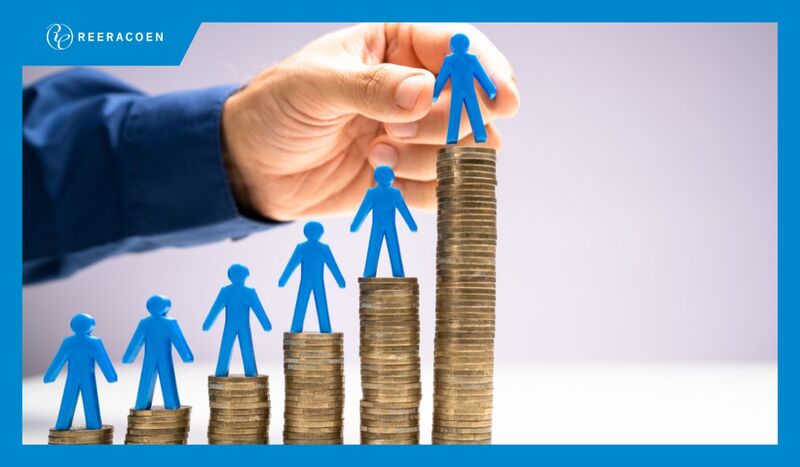Vietnamese Reunification Day 2025: What It Means for Today’s Workforce
Vietnamese Reunification Day 2025: What It Means for Today’s Workforce
Every April 30, Vietnam pauses to remember a moment that changed the nation forever — Reunification Day (Ngày Giải Phóng Miền Nam). It marks the fall of Saigon in 1975 and the official end of the Vietnam War, leading to the reunification of North and South Vietnam.
Today, almost 50 years later, Reunification Day is not just a public holiday — it’s a day of national reflection, pride, and unity. For modern workers and employers, it’s also a valuable time to celebrate peace, progress, and people.
At Reeracoen Vietnam, where we support both local and international businesses, we believe understanding this holiday helps build deeper cultural connections at work and strengthens your position as an employer of choice in Vietnam.
When Is Reunification Day in 2025?
-
Date: Wednesday, April 30, 2025
-
Public Holiday: Yes (nationwide)
-
It often creates a long weekend, as it’s followed by International Labour Day on May 1 (Thursday) — ideal for employee rest, travel, or team bonding activities.
What Is Reunification Day?
Reunification Day, also known as Victory Day or Liberation Day, commemorates April 30, 1975 — the day North Vietnamese forces captured Saigon (now Ho Chi Minh City), ending a 20-year conflict and formally reunifying Vietnam.
It’s one of the most important public holidays in the country, observed with:
-
Military parades
-
Fireworks
-
Public performances
-
National speeches and patriotic tributes
Why It Matters Today – For Businesses and Workers
-
🇻🇳 According to a 2024 survey by Zalo Research, 72% of Vietnamese professionals say national holidays like Reunification Day help them feel more connected to their identity and values.
-
89% of employers use long weekends like April 30–May 1 to run team-building activities or offer mental wellness breaks (Reeracoen Vietnam insights).
-
In 2024, domestic tourism rose by 40% during Reunification Day, making it one of the most travelled holidays after Tết (Vietnam National Administration of Tourism).
How Reunification Day Is Celebrated Across Vietnam
Nationwide Events
-
Hanoi: Flag-raising ceremonies at Ba Đình Square and memorial activities at Hồ Chí Minh Mausoleum
-
Ho Chi Minh City: Fireworks at key locations, like Landmark 81 and Saigon River; street parades and public concerts
-
Da Nang, Hue, and Can Tho: Cultural festivals, river boat shows, and community gatherings
At the Workplace
Many companies:
-
Close offices for two days (April 30 & May 1)
-
Host internal celebrations or employee appreciation days
-
Share national greetings on social media and with partners
What Employers and Employees Can Do?
For Employers:
-
Share a company-wide greeting or historical trivia to educate younger staff
-
Celebrate employee achievements alongside national pride
-
Align internal values with themes of unity, resilience, and progress
For Workers:
-
Take a local trip with friends or family — many destinations run Reunification-themed discounts
-
Learn about Vietnam’s post-1975 transformation
-
Reflect on your personal contributions to workplace unity and growth
Reunification as a Workplace Metaphor
Reunification is about bridging gaps, resolving differences, and working toward a shared vision — values that translate directly into modern workplace culture.
In fact, Reeracoen Vietnam research shows that companies with strong internal unity and communication enjoy 26% lower turnover rates and higher employee satisfaction.
Final Thought from Reeracoen Vietnam
Reunification Day reminds us that progress comes from unity — a lesson that resonates far beyond history. Whether you’re leading a team or advancing your career, April 30 is a moment to pause, connect, and recommit to shared goals.
Let Reeracoen help you build a workplace that celebrates culture, people, and purpose — every day of the year.
📨 Connect with us today, and let’s grow together.
Disclaimer:
The information provided in our blog articles is intended for general informational purposes only. It is not a substitute for professional advice and should not be relied upon as such.
While we strive to provide accurate and up-to-date information, the ever-evolving nature of certain topics may result in content becoming outdated or inaccurate over time. Therefore, we recommend consulting with qualified professionals or experts in the respective fields for specific advice or guidance. Any actions taken based on the information contained in our blog articles are solely at the reader's discretion and risk. We do not assume any responsibility or liability for any loss, damage, or adverse consequences incurred as a result of such actions.
We may occasionally provide links to external websites or resources for further information or reference. These links are provided for convenience and do not imply endorsement or responsibility for the content or accuracy of these external sources. Our blog articles may also include personal opinions, views, or interpretations of the authors, which do not necessarily reflect the views of our organisation as a whole. We encourage readers to verify the accuracy and relevance of information presented in our blog articles and to seek professional advice when needed.
Your use of this website and its content constitutes acceptance of this disclaimer.
References & Further Reading


